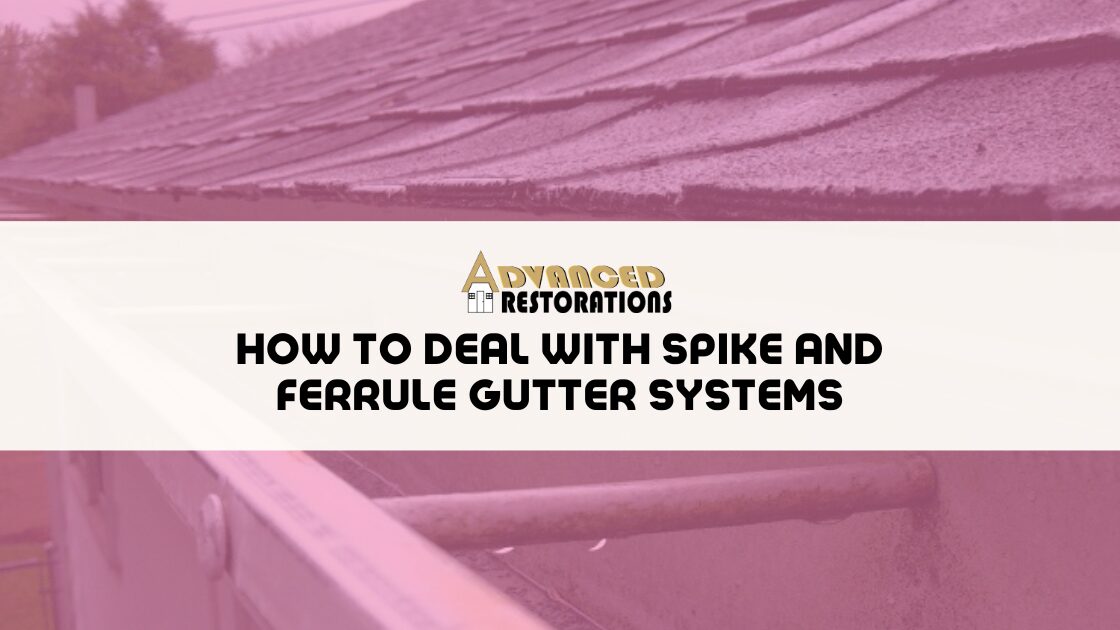
How To Deal With Spike and Ferrule Gutter Systems
Our office previously tracked the number of projects we came across that involved a gutter system attached to the home using a spike and ferrule system – we told ourselves that our goal was to complete enough projects in our area that we would never see another example of this antiquated system again. Despite our best efforts, we continue to see gutter systems attached in this manner and we’ve discontinued the tracking – we eventually ran out of space on our whiteboard.
What’s the issue with spike and ferrule attachment? For that matter, what is a spike and ferrule attachment? The image below shows exactly what we’ll be discussing today:
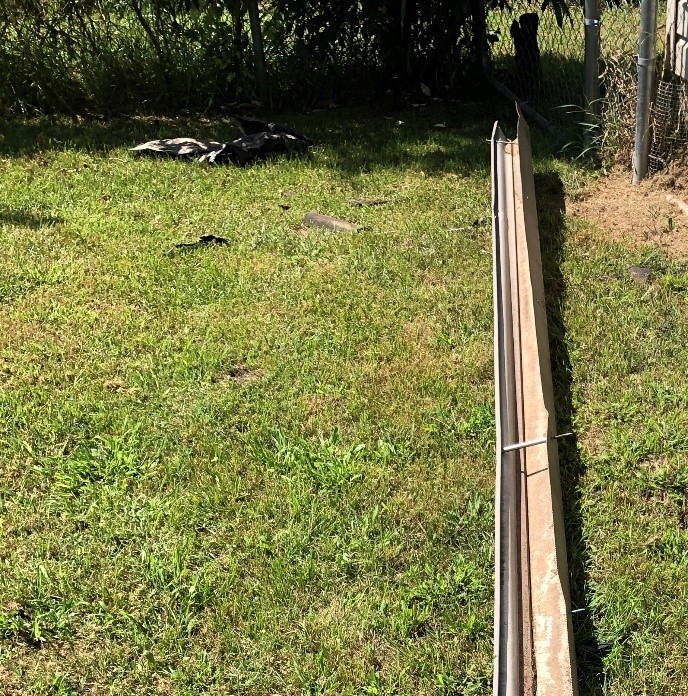

So, what are we looking at? The tubular piece of aluminum we can see prominently is the “ferrule” in spike and ferrule. Essentially, this is a hollow tube that is a channel for the “spike” to reside in. It’s a guide for the spike’s path and it’s also intended to block moisture from attacking the area where the spike will be inserted into the underlying fascia.
The spike itself can just barely be seen on the outside edge of the gutter system – to the general public it looks just like a nail-head and that’s a fairly accurate assumption. The spike is essentially a long nail that has texturing, or knurling, on one end. That knurling is designed to “bite” into the wooden sub-fascia and keep the gutter system secured through any type of weather the home may come across. These spikes need to hold as secure as possible to ensure the gutter system is able to hold the amounts of water it can see during a high-rain event.
Why do we care about this spike and ferrule system? Well, we care because this attachment style will almost always have an impact on repairs you may complete to the roofing and gutter system on your home. In our example photo, you can clearly see the spikes for this system have been driven through the drip edge of the roofing system. Now, if you’ve sustained damage to the asphalt shingles that requires replacement but haven’t seen substantial damage to your gutters, this creates an immediate problem.

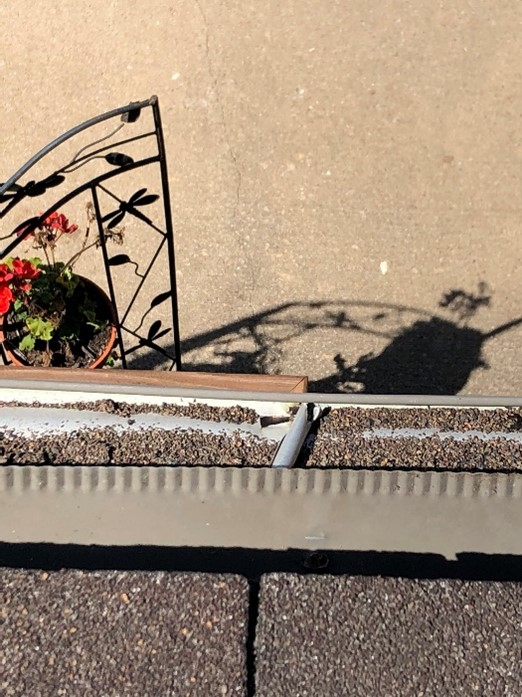
The International Residential Code, or IRC, dictates that drip edge needs to be replaced when replacing the roofing system – if those spikes are through the drip edge, how will new drip edge be installed? Many contractors, and many insurance carriers – to be fair, would expect a homeowner to accept their drip edge to be “notched” to allow for installation around the spike. Basically, you’ll cut a square from the new drip edge to drop it over that existing spike. The problems created from this solution are two-fold: One, you as a homeowner will potentially lose access to any material warranties as you now have improperly installed drip edge (IRC dictates that drip edge must extend no less than ¼” below the roof sheathing, notching the drip edge defeats this requirement). Two, that drip edge is now compromised from performing its purpose – an ingress point for potential water damage has been created.
What’s the solution? Can we detach the gutters and then re-install them after we’ve completed the roof repairs? Unfortunately, we’ve yet to run into a project where this was completed successfully – there have been countless attempts to do so and it has always ended poorly.

Let’s discuss why that is the case for spike and ferrule gutter attachment. As we mentioned before, the spikes themselves are knurled to ensure a very rigid attachment to the home. A by-product of that rigidity is that it’s very difficult to detach the gutter system without a high level of force. Seamless gutter systems are made from aluminum coil stock – while they are able to sustain certain levels of abuse, the metal is thin and prone to taking damage when extreme force is applied (gutters are considered a soft metal material, we can see their susceptibility to damage when hailstorms damage them quite easily). The application of force needed to dislodge the spike will lead to damage to the gutter system – in some scenarios this is as small as dents but in other scenarios, this can result in bent gutter sections. In the case of spikes that are stubborn in giving up their hold on the fascia, it can even result in torn sections of the gutters.
On top of potential damage directly to the gutter system, there will likely be damage to the underlying fascia as well. Below are example photos of fascia that was damaged during an attempted detach of spiked gutters.

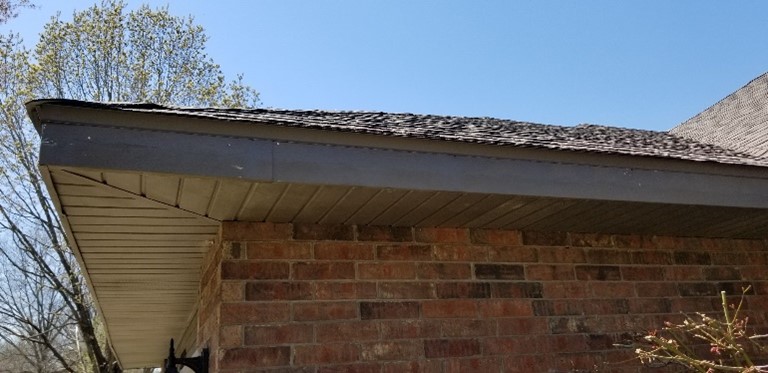
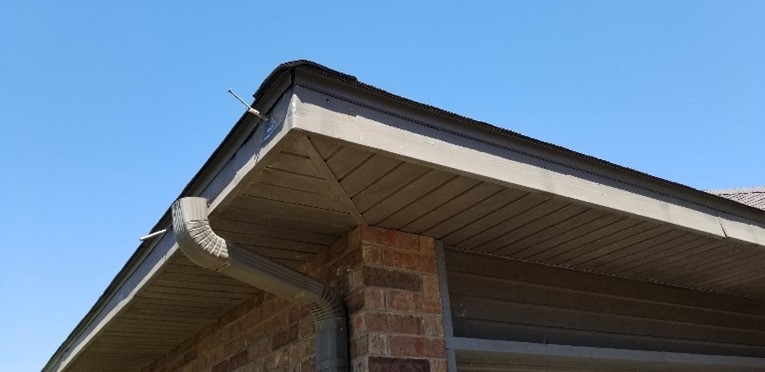

As we can see in these examples, the result from attempting to just detach a spiked gutter system is more than likely going to be damage to multiple areas of your property.
Now, we can delve a bit further into the hypothetical world where no damage occurred to any items during detaching the spiked gutter system.
At that point, we’re left with a few options – there will already be existing holes from where the spikes were previously attached. Those existing holes will now be slightly larger due to removing the knurled spikes, if we attempt to re-drive the spikes into those holes, a countdown clock will start for when the spikes will begin to work their way out of the now-larger holes. The extra weight in the gutter system from a heavy rainfall or, if we’re nearing winter, the weight of ice from any residual water in the system would be enough to pull the gutters down from the fascia.
Another option would be to drive the spikes into new holes. This means there will be several additional labor items to consider – the existing holes will need to be patched in some way, if left open they would be an easy entry point for water to begin rotting the sub-fascia. Additionally, the existing spike holes in the gutters themselves will also need to be patched to prevent unwanted water flow through multiple areas around your property. Both solutions take additional time which will mean additional labor costs.
In our experience, the additional labor costs (as well as labor costs for the detach and re-installation process), tend to amount to a higher overall cost than would come into play during a full replacement of the gutters. During a new installation, a bracket system can be used for attachment which will allow for ease of detach and reinstallation should any new issues arise with the roofing system.
No matter the scenario you’re dealing with, it’s always a great idea to have a professional perform an inspection and help you plan the best course of action for your property.
Call Advanced Restorations today at (417) 229-0667 to schedule time for one of our Field Supervisors to review your property. We may have stopped our official project count for spike and ferrule gutters, but our goal remains the same, we plan to complete enough gutter replacement projects that no future contractor sees the antiquated system again!
